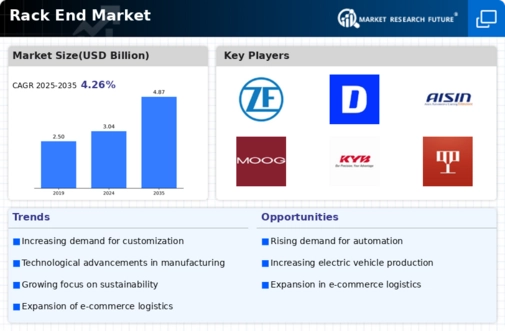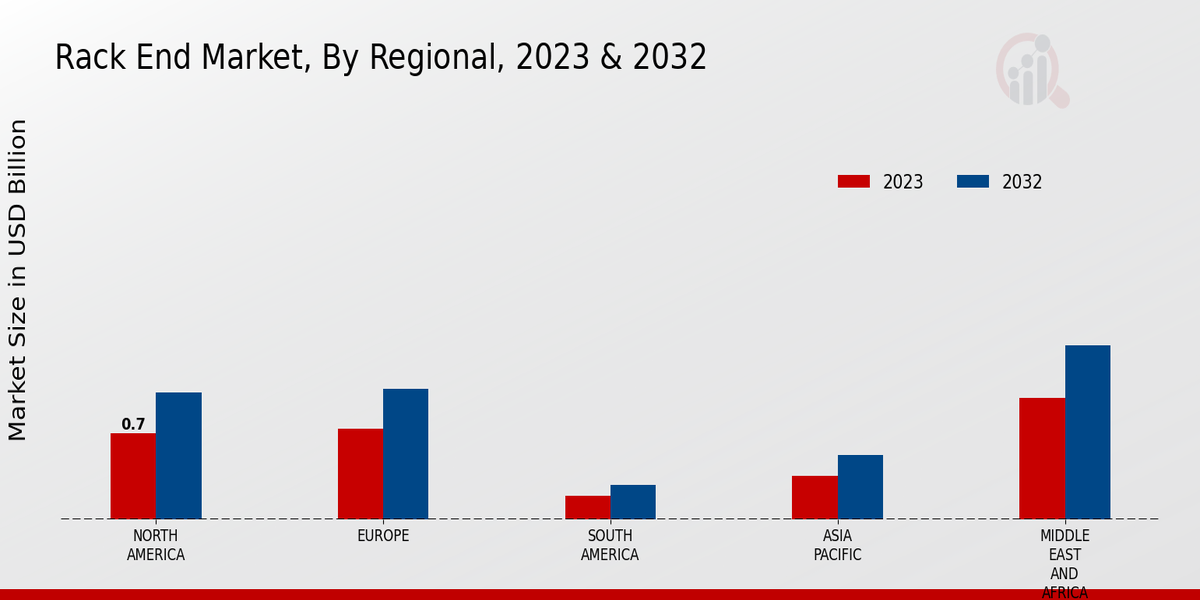Market Growth Projections
The Global Rack End Market Industry is projected to experience substantial growth in the coming years. With a valuation of 3.04 USD Billion in 2024, the market is expected to reach 4.87 USD Billion by 2035, reflecting a CAGR of 4.38% from 2025 to 2035. This growth trajectory suggests a robust demand for rack ends driven by various factors, including technological advancements, increasing vehicle production, and heightened safety standards. The projections indicate a positive outlook for manufacturers and stakeholders within the industry, highlighting the potential for innovation and expansion in the market.
Growth of Aftermarket Services
The expansion of aftermarket services is a notable driver for the Global Rack End Market Industry. As vehicle ownership rates increase, the demand for replacement parts, including rack ends, is also on the rise. Consumers are increasingly opting for aftermarket solutions to maintain vehicle performance and safety. This trend is particularly evident in regions with a high density of older vehicles, where the need for replacement parts becomes critical. The aftermarket segment is expected to grow significantly, contributing to the overall market growth. This shift indicates a robust opportunity for manufacturers to diversify their offerings and cater to the evolving needs of consumers.
Increasing Vehicle Production Rates
The Global Rack End Market Industry is significantly influenced by the rising production rates of vehicles worldwide. As economies recover and consumer demand for personal and commercial vehicles increases, manufacturers are ramping up production. This surge in vehicle production directly correlates with the demand for essential components like rack ends. In 2024, the market is projected to be valued at 3.04 USD Billion, driven by this upward trend. Furthermore, as manufacturers focus on enhancing vehicle safety and performance, the need for high-quality rack ends becomes even more pronounced. This trend is expected to sustain the market's growth trajectory in the coming years.
Rising Demand for Electric Vehicles
The increasing adoption of electric vehicles (EVs) globally is a significant driver for the Global Rack End Market Industry. As manufacturers strive to enhance vehicle performance and safety, the demand for high-quality rack ends has surged. In 2024, the market is projected to reach 3.04 USD Billion, reflecting the growing emphasis on precision engineering in automotive components. The shift towards EVs necessitates advanced steering systems, which rely heavily on efficient rack end designs. This trend is expected to continue, with the market anticipated to grow at a CAGR of 4.38% from 2025 to 2035, potentially reaching 4.87 USD Billion by 2035.
Regulatory Standards and Safety Norms
The Global Rack End Market Industry is also shaped by stringent regulatory standards and safety norms imposed by governments worldwide. These regulations often mandate the use of high-quality components in vehicle manufacturing to ensure safety and reliability. As a result, manufacturers are compelled to invest in superior rack end designs that comply with these standards. This compliance not only enhances vehicle safety but also boosts consumer confidence in automotive products. The ongoing evolution of safety regulations is likely to drive innovation in rack end technology, further propelling market growth as manufacturers seek to meet these ever-evolving requirements.
Technological Advancements in Manufacturing
Technological innovations in manufacturing processes are transforming the Global Rack End Market Industry. Advanced techniques such as automation, robotics, and 3D printing are enhancing production efficiency and precision. These advancements enable manufacturers to produce rack ends that meet stringent quality standards while reducing costs. As a result, companies can respond more effectively to market demands and customize products for specific applications. The integration of smart technologies into manufacturing processes is likely to further streamline operations, thereby increasing competitiveness in the market. This evolution in manufacturing is expected to contribute positively to market growth over the coming years.

















